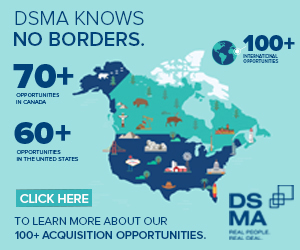Inconsistent public policy measures leave Canada vulnerable as China ascends

Beijing, China – Apr 30, 2024: CATL Qilin Battery is displayed at the 17th Beijing International Automotive Exhibition (Auto China 2024). CATL is a Chinese battery manufacturer and technology company.
Earlier this year, I had the opportunity to participate in the SAFE conference in Washington, DC.
For those that are not familiar with SAFE, the acronym stands for Securing America’s Energy Future, which is a very influential activist think tank organization founded and run by …a Canadian, Robbie Diamond.
Now some might be wondering why, as a Canadian auto association President I would be attending a conference about securing America’s energy future. The reason for my attendance is because, as I see it, Canada’s automotive and energy industries will be even more inextricably tied to their counterparts in the United States as we transition to new, clean energy sources for automobiles, whether those sources be electricity or hydrogen.
This activity is being undertaken in an effort to claw back some control of our collective destiny from the clutches of the Chinese who have spent the last 15 years methodically building out their zero emission vehicle (or new energy vehicle — as they call it) supply chain.
It hasn’t been just the vertical integration of battery and battery components facilities with, in many cases, state-backed new energy vehicle production, but also the scouring of the globe for sites of critical minerals and raw materials to facilitate battery production.
China’s efforts have paid off because in almost any area of raw materials, components production or battery production the Chinese control anywhere from about 65 per cent to 90 per cent of the world’s source materials and/or the capacity to process those same materials.
This matters because China’s activities have essentially given them a 10-15 year advantage over the rest of the world in scaling up their electric vehicle production and it is scale, more so that the cost of batteries, that allows a vehicle manufacturer to come down the cost curve — which the Chinese have excelled at, and the backing of the CCP for a number of these companies has accelerated that process.
We’ve already started to witness the impact that such aggressive pricing has had on European markets where the Chinese have initiated their export strategy. There is more to come.
Last year China became the world’s largest exporter of automobiles and in the first quarter of 2023 Chinese exports were up 58 per cent compared to the first quarter of 2022.
It is for this reason that the United States has put in place a 27.5 per cent tariff on vehicles from China and recently increased that to 100 per cent along with similar efforts being undertaken by the EU to increase tariffs an additional 38 per cent over and above the 10 per cent MFN tariff rate.
Even the 27.5 per cent tariff that was in place sounds like a lot but if the Chinese can land a vehicle in the U.S.market for, say $20,000, a 27.5 per cent tariff still only adds another $5,500 to the price of the vehicle which would make those vehicles the cheapest EVs available in the marketplace.
And what of Canada?
Well, Canada has no such 100 per cent tariff like the U.S. has implemented and currently our Most Favoured Nation bound tariff under the WTO is 6.1 per cent on imports.
China’s efforts have paid off because in almost any area of raw materials, components production or battery production the Chinese control anywhere from about 65 per cent to 90 per cent of the world’s source materials and/or the capacity to process those same materials.
We also have two provinces and a federal government that instituted zero emission vehicle mandates of such a stringency that they are unlikely to be achieved.
Yet many within the government don’t seem to grasp the geopolitics of all of this and don’t seem to fully appreciate the complete incongruity of their policies.
As an example, late last year in consultation with staff at Quebec’s Ministry of the Environment and the Fight Against Climate Change, when they were in the midst of increasing their targets under Quebec’s ZEV mandate to 85 per cent ZEVs by 2030 from 60 per cent, one official stated to the auto industry present: “What can we do to bring down the barriers to entry for cheaper EVs from China?.” Many of us were stunned.
There seemed to be absolutely no appreciation of the fact that their national (Quebec) government and the Canadian government were spending collectively over $7.3 billion dollars (Quebec’s share is $2.93B) to land the Northvolt battery plant in Quebec with the view to building batteries to go into vehicles built in North America, nor was there any appreciation that these investments could be completely undermined with very inexpensive Chinese vehicles in the marketplace.
The reality is, we are still building our EV production and EV component ecosystem in North America which is going to take a few years to bring completely on-line and allow production at scale, which, as mentioned earlier will facilitate lower cost vehicles produced here.
Regrettably, there seem to be many that still have not recognized that there needs to be a connection between environmental policy and industrial development policy. ZEV mandates undermine industrial development policy and distort the marketplace by forcing manufacturers to either limit the number of vehicles they sell or pay significant penalties ($20,000 per vehicle) if they do not meet the ZEV targets.
To come full circle, it didn’t matter what the agenda item was at the SAFE Conference in March, China was always identified as the clear and present danger.
Vehicle affordability — especially with ZEVs — is a huge issue for consumers for sure, and also automakers. Yet these failed government policies encourage manufacturers to sell only expensive vehicles to maximize profit if they are going to be both potentially constrained on the number of vehicles they can sell on one hand AND find a way to continue to pay for the transition to electrification on the other hand from profits made on vehicles sold.
In closing, how Canada plays its foreign policy and trade cards over the next twelve to eighteen months will have potentially significant ramifications given a U.S. election this fall, an election of our own in 2025, and the 2026 review of the CUSMA (USMCA).
If Canada is seen to be a back door to the United States for Chinese vehicles or adopts policies that are significantly divergent from those of the United States with respect to China, we may find our cherished access to the U.S. market made that much more difficult. Thus, we should be striving to do everything that we can to be inside the North American tent as a valued component of a North American EV ecosystem and supply chain.
To come full circle, it didn’t matter what the agenda item was at the SAFE Conference in March, China was always identified as the clear and present danger.
The U.S. has taken measures to attempt to contain and manage the disruption, and they are still very much concerned. Canada needs to catch up and have a thoughtful trade policy and industrial policy dialogue and nail down how it will deal with this threat to support not only the existing vehicle manufacturing base in Canada but also the billions of public funds that have been spent attracting battery and battery components facilities to Canada.


















